
ΙΩΝΩΝ ΑΓΚΩΝ ή ΙΩΝΙΚΗ ΓΩΝΙΑ...ΣΤΗΝ ΑΠΩ ΙΩΝΙΑ(ΙΑΠΩΝΙΑ)...
ΠΑΡΑΤΗΡΟΥΜΕ ΕΙΣ ΤΟΝ ΧΑΡΤΗΝ ΤΙΣ ΟΝΟΜΑΣΙΕΣ...
DANNUHAMA...,IRIZAKI...,AGARIZAKI...,KUBURA...
ΑΥΘΑΙΡΕΤΩΣ ΜΕΤΑΦΡΑΖΟΥΜΕ...
DANNUHAMA=ΔΑΝΑΩΝ ΧΩΜΑ...,
IRIZAKI=ΙΡΙΔΟΣ ΑΚΙΣ...,
AGARIZAKI=ΑΝΩΓΑΙΑ ΙΡΙΔΟΣ ΑΚΙΣ...,
KUBURA=ΚΥΒΟΥΡΙ(ΤΑΦΟΣ ΣΕ ΣΧΗΜΑ ΚΥΒΟΥ).Μέχρι πριν μερικά χρόνια γέροντες και γερόντισσες σε χωριά της Ηλείας,τους τάφους τους έλεγαν "κυβούρια"...!
Το ίδιο το όνομα της Ιαπωνίας είναι καθαρά σύνθετη ελληνική ονομασία,από τις λέξεις ΑΠΩ ΙΩΝΙΑ...Και αυτό επιβεβαιώνεται από τις ονομασίες...ΑΠΩ ΑΝΑΤΟΛΗ,ΑΠΩ ΑΣΙΑ...!Όπου ΑΠΩ=ΑΠΩΤΕΡΗ=ΜΑΚΡΙΝΗ,ΑΠΟΜΑΚΡΥΣΜΕΝΗ...
ΟΙ ΑΡΧΑΙΟΤΑΤΟΙ ΚΑΤΟΙΚΟΙ ΤΗΣ ΑΠΩ ΙΩΝΙΑΣ ΕΙΝΑΙ ΟΙ...Αϊνού.
ΔΕΙΤΕ ΤΑ ΠΕΡΙ YONAGYNI...
ΩΣ ΓΝΩΣΤΟΝ ΣΧΕΔΟΝ ΟΛΗ Η ΑΣΙΑ ΟΝΟΜΑΖΕΙ ΤΗΝ ΕΛΛΑΔΑ...ΙΩΝΙΑ.
ΔΕΙΤΕ...
In Middle Eastern and South Asian languages, the common root is "yun" or "ywn". It is borrowed from the Greek name "Ionia", the Greek region of Asia Minor:[6]
|
...............
The drowned temple off the coast of Japan.
First of all, a few things about prehistoric Japan.
The first people living in Japan were the Jomon people, who were ethnically very different to the modern Yayoi Japanese people. They were the ancestors of the the Ainu people, and they were not a ‘Mongoloid’ people. They have a roughly Caucasian face skull shape, occasionally light brown or blue/grey eyes, very thick body hair and bushy beards. Sometimes their hair is a reddish brown or brown in colour, and is like Caucasian hair in cross section under a microscope. Genetically, they appear to have been all Asian though.
The Yayoi (Mongoloid Koreans) moved into Japan a few thousand years ago, and all the evidence is that that the Samurai classes have a lot of Ainu ancestry in them. This would suggest it was a population movement, not some military conquest on the part of the Yayoi.
The worlds oldest pottery is from these people, the commonest age estimate seems to be about 16,500 years old for it. They are also thought to have been practising some kind of agriculture a very long time ago, although it hasn’t been proved, but the sudden appearance of Jomon tooth decay is what is known as ‘a dead giveaway’ that they swapped from a hunter gatherer lifestyle to an agricultural one at about the same time they began making pottery. Probably growing taro.
Also, pottery is another good indicator of a culture that’s become sedentary/agricultural. Pots are heavy and they break easily, not something a nomad would use. A great example of this is the Venus of Dolni Vestonice, a ceramic object from the Czech republic about 26,000 years old. Mesolithic people knew how to make ceramics, they just didn’t find them convenient for containers when they were mobile.
What all this text is building up to is; that it was perfectly possible for an ice age civilisation in Japan to have been organised enough to carry out the kind of work necessary to hack a huge shrine out of raw rock. As for it’s underwater location, about 10,000 years ago the ice age ended and the sea levels went up by about 100m. This would have submerged a lot of the land that would have ben prime farmland and urban sites, as humans have a fondness for building cities along estuaries.
The Yonaguni Monument.
This is found off the coast of Okinawa, which is fairly close to Taiwan. It is a very, very big structure. Although most of it seems naturally occuring and similar to other cliffs in the area, there are indications it was worked on to enhance its appearance. Really, a lot of it could just be natural, but the chunk of carved rock under the face in this sequence, I don’t see how a natural phenomena could cause that.
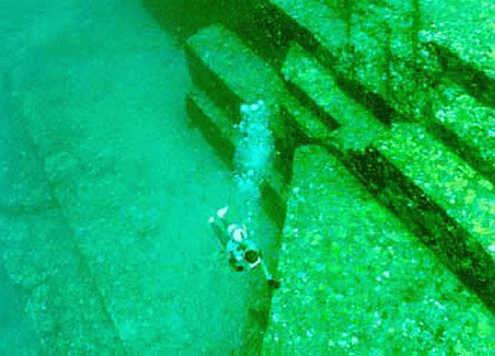
This face resembles an Ainu face, deep set eyes and a high bridged nose. It looks to me as if he may have lost the bulk of his nose to erosion or an earthquake. Quite likely, if you consider how geologically active the area is. The head is about 7m high.
Carving on a rock.
The real clincher for me was the stairs.
A model of the whole site.
From National Geographic
Yonaguni Jima is an island that lies near the southern tip of Japan’s Ryukyu archipelago, about 75 miles (120 kilometers) off the eastern coast of Taiwan (see map).
A local diver first noticed the Yonaguni formations in 1986, after which a promontory on the island was unofficially renamed Iseki Hanto, or Ruins Point
The district of Yonaguni officially owns the formations, and tourists and researchers can freely dive at the site.
The district of Yonaguni officially owns the formations, and tourists and researchers can freely dive at the site.
Some experts believe that the structures could be all that’s left of Mu, a fabled Pacific civilization rumored to have vanished beneath the waves.
On hearing about the find, Kimura said, his initial impression was that the formations could be natural. But he changed his mind after his first dive.
“I think it’s very difficult to explain away their origin as being purely natural, because of the vast amount of evidence of man’s influence on the structures,” he said.
For example, Kimura said, he has identified quarry marks in the stone, rudimentary characters etched onto carved faces, and rocks sculpted into the likenesses of animals.
“The characters and animal monuments in the water, which I have been able to partially recover in my laboratory, suggest the culture comes from the Asian continent,” he said.
“One example I have described as an underwater sphinx resembles a Chinese or ancient Okinawan king.”
Whoever created the city, most of it apparently sank in one of the huge seismic events that this part of the Pacific Rim is famous for, Kimura said.
The world’s largest recorded tsunami struck Yonaguni Jima in April 1771 with an estimated height of more than 131 feet (40 meters), he noted, so such a fate might also have befallen the ancient civilization.
Kimura said he has identified ten structures off Yonaguni and a further five related structures off the main island of Okinawa. In total the ruins cover an area spanning 984 feet by 492 feet (300 meters by 150 meters).
The structures include the ruins of a castle, a triumphal arch, five temples, and at least one large stadium, all of which are connected by roads and water channels and are partly shielded by what could be huge retaining walls.
Kimura believes the ruins date back to at least 5,000 years, based on the dates of stalactites found inside underwater caves that he says sank with the city.
And structures similar to the ruins sitting on the nearby coast have yielded charcoal dated to 1,600 years ago—a possible indication of ancient human inhabitants, Kimura added.
But more direct evidence of human involvement with the site has been harder to come by.
“Pottery and wood do not last on the bottom of the ocean, but we are interested in further research on a relief at the site that is apparently painted and resembles a cow,” Kimura said.
“We want to determine the makeup of the paint. I would also like to carry out subsurface research.”
Natural Forces
Toru Ouchi, an associate professor of seismology at Kobe University, supports Kimura’s hypothesis.
Ouchi said that he has never seen tectonic activity having such an effect on a landscape either above or below the water.
“I’ve dived there as well and touched the pyramid,” he said. “What Professor Kimura says is not exaggerated at all. It’s easy to tell that those relics were not caused by earthquakes.”
Boston University’s Schoch, meanwhile, is just as certain that the Yonaguni formations are natural.
He suggests that holes in the rock, which Kimura believes were used to support posts, were merely created by underwater eddies scouring at depressions.
Lines of smaller holes were formed by marine creatures exploiting a seam in the rock, he said.
“The first time I dived there, I knew it was not artificial,” Schoch said. “It’s not as regular as many people claim, and the right angles and symmetry don’t add up in many places.”
He emphasizes that he is not accusing anyone of deliberately falsifying evidence.
But many of the photos tend to give a perfect view of the site, making the lines look as regular as possible, he said.
Schoch also says he has seen what Kimura believes to be renderings of animals and human faces at the site.
“Professor Kimura says he has seen some kind of writing or images, but they are just scratches on a rock that are natural,” he said.
“He interprets them as being manmade, but I don’t know where he’s coming from.”
But Kimura is undeterred by critics, adding that the new governor of Okinawa Prefecture and officials from the United Nations Educational, Scientific, and Cultural Organization have recently expressed interest in verifying the site.
“The best way to get a definitive answer about their origins is to keep going back and collecting more evidence,” he continued.
“If I’d not had a chance to see these structures for myself, I might be skeptical as well.”
A great site with more photos, and another with images of the rock carvings on it.
And a youtube vid .
Also, a report concluding that tool marks were in evidence on it
Chances of being a real underwater temple, pretty high at 95%
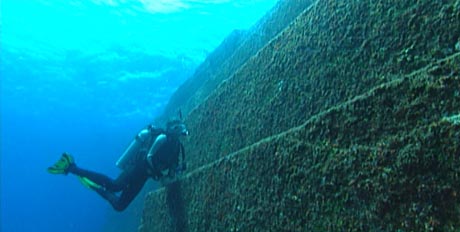
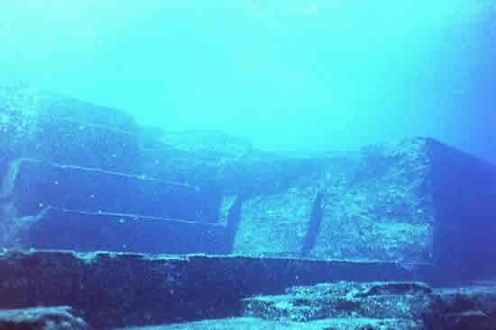
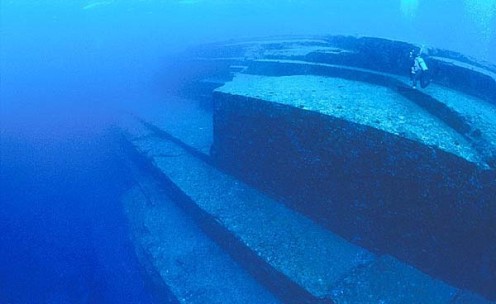
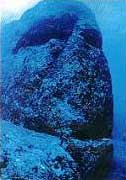
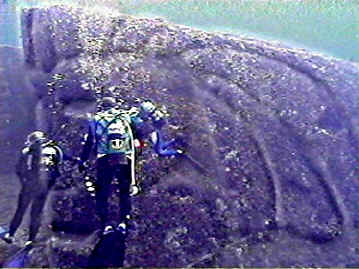
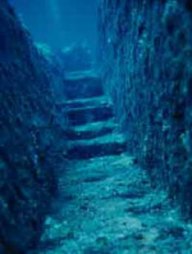
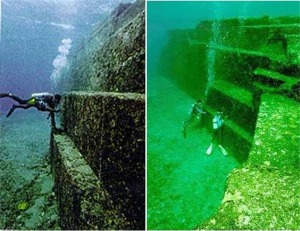
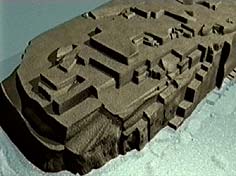


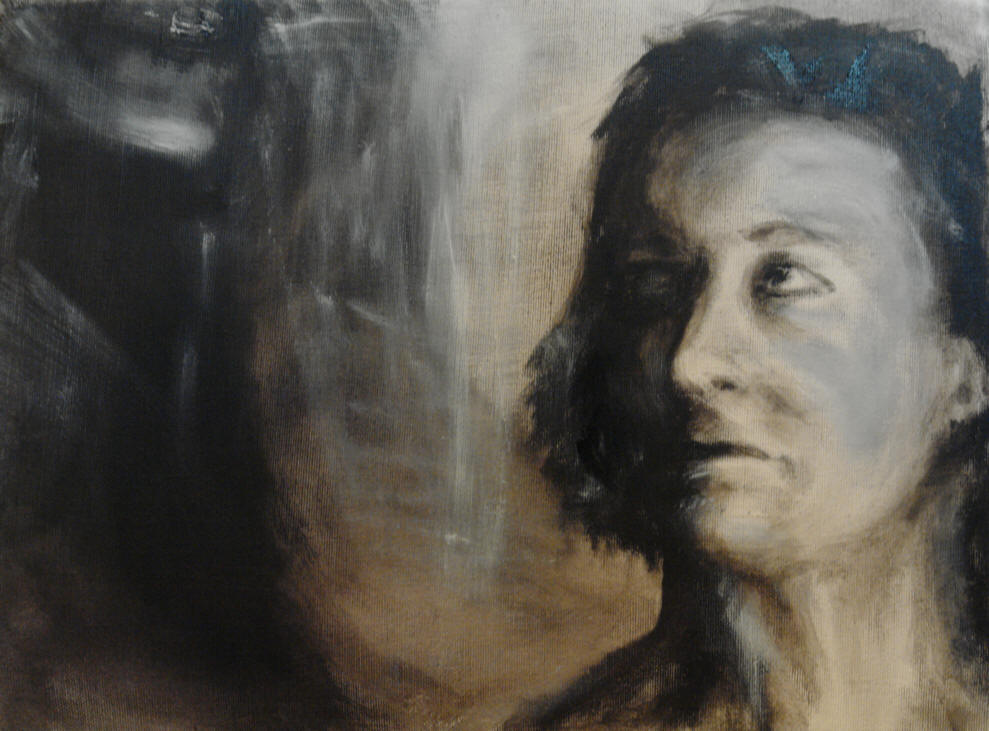
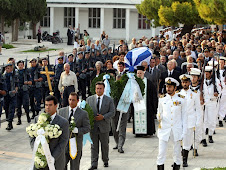


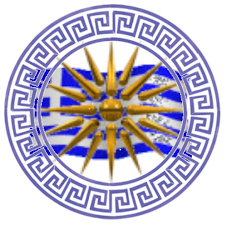
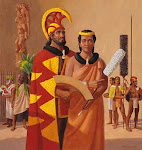
Δεν υπάρχουν σχόλια:
Δημοσίευση σχολίου